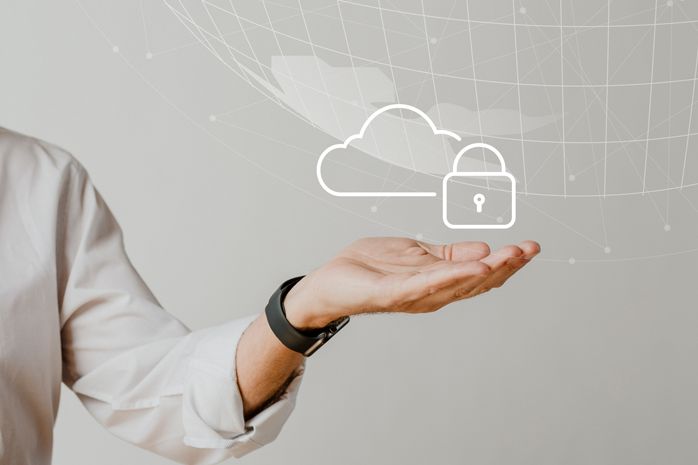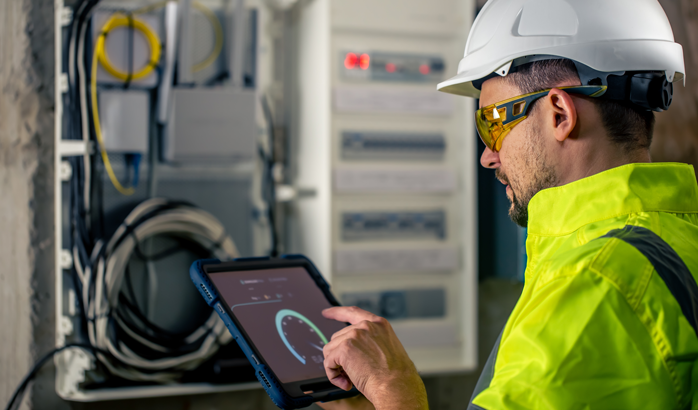Why Data Privacy is Essential in AI-Powered Safety Solutions

A factory floor hums with activity, where machines are whirring, workers focused on their tasks and suddenly a near-miss incident sends a chill through the team. Thanks to an AI-powered safety system monitoring CCTV footage, the risk was flagged before it turned into an accident. But as the system ensures safety, it’s also handling sensitive data, from video feeds to employee details.
This is where the challenge lies. While AI transforms workplace safety with real-time monitoring and predictive analytics, it also raises pressing concerns about data privacy. Without the right safeguards, these innovations can chip away at trust, fall short on compliance, and put sensitive information at risk. Notably, a McKinsey survey found that 53% of organizations acknowledge cybersecurity as a generative AI-related risk, yet only 38% are actively working to mitigate it. A recent KPMG report also reflects on the situation, highlighting that embedding privacy into AI development processes is crucial for building trust and navigating potential privacy challenges.
Let’s dive into why data privacy is essential in AI-powered safety solutions and how it can coexist with innovation.
Can Privacy Keep Up with AI Innovation?
AI-powered safety solutions offer immense potential. They monitor workplace activities around the clock, identify unsafe actions in real time, and even predict hazards before they occur. But achieving this level of efficiency demands significant data collection, video feeds, location tracking, and behavioral patterns are just the beginning. The challenge lies in finding harmony between innovation and privacy. While these systems depend on data to deliver results, organizations must ensure responsible handling at every stage. Mishandling this delicate balance can erode trust, trigger regulatory scrutiny, and damage reputations beyond repair.
The Hidden Risks of Poor Data Privacy
When data privacy isn’t prioritized in AI-powered safety solutions, the risks can ripple across multiple levels—affecting individuals, organizations, and even the broader industry. Here’s a closer look at some of the most pressing concerns.
- Breach of Employee Trust
Imagine an employee learning that footage from a workplace AI system was shared without consent or anonymization. Maybe it was with a vendor for “algorithm improvements” or included identifiable details in a public presentation. How would this person feel, knowing their workplace data became part of an external agenda?
Trust is fragile, and such breaches could shatter it entirely. Employees may begin to view these tools as invasive surveillance rather than collaborative safety measures, fueling resistance to their adoption. This mistrust doesn’t just affect individual morale—it undermines the effectiveness of safety programs as a whole. When workers are skeptical, they are less likely to engage with the systems designed to protect them.
- Regulatory and Legal Fallout
A small slip in data handling could lead to massive legal and financial consequences. Take, for instance, a retail chain that installed AI-powered cameras to monitor inventory theft. They overlooked anonymizing the data, leading to unintentional employee profiling. When this was flagged during a compliance audit, the company faced not only public backlash but also steep fines under GDPR.
Laws like GDPR (General Data Protection Regulation) in Europe and CCPA (California Consumer Privacy Act) in the U.S. impose stringent requirements for data collection, usage, and storage. Organizations failing to comply can face penalties in the millions, not to mention reputational damage that can scare off partners and clients.
- Risk of Data Breaches
Picture this: A manufacturing company uses AI to track safety compliance. The system collects hours of video footage and processes sensitive behavioral data daily. One day, the company’s servers are hacked, exposing employee details, recorded incidents, and even confidential operational data.
Such data breaches aren’t hypothetical—they’ve happened before, and they’re devastating. Hackers target organizations with vast data pools, knowing the stakes are high. The fallout can include identity theft, legal battles, and erosion of public confidence. Worse, once breached, data can circulate online indefinitely, amplifying the harm over time.
- Reputational Damage
Public trust in a brand can take years to build but only seconds to shatter. When a workplace safety solution mishandles sensitive data, the resulting headlines can wreak havoc on the organization’s reputation.
Consider a healthcare provider deploying AI to improve workplace safety for its staff. If patient or staff data were inadvertently exposed during this process, the public outcry could permanently damage trust in the institution’s ability to handle private information. Employees and stakeholders expect transparency, and failure to meet these expectations can lead to long-term reputational damage that extends beyond the immediate organization.
- Internal Resistance and Cultural Fallout
In workplaces where privacy concerns aren’t addressed, the introduction of AI-powered safety solutions can trigger cultural pushback. Employees may fear constant surveillance, assuming the technology is there to monitor productivity or penalize mistakes, rather than to enhance safety.
In 2021, Teleperformance, a global call center company, faced significant internal resistance after implementing AI-powered webcams to monitor remote employees. The initiative aimed to ensure compliance with security policies by using AI to detect home-working infractions. However, employees perceived this as intrusive surveillance, leading to widespread dissatisfaction and concerns over privacy. The backlash was particularly notable in countries like India, Mexico, and the Philippines, where the monitoring was rolled out. This situation underscores the critical importance of clear communication and robust privacy measures when introducing AI monitoring tools in the workplace.
Key Privacy Principles for AI-Powered Safety Solutions
To ensure that AI-powered safety systems are both effective and ethical, organizations must adhere to core privacy principles. These principles not only protect data but also foster trust among employees and stakeholders, ensuring that innovation does not come at the cost of privacy. Here’s how these principles shape the foundation of secure, privacy-respecting AI solutions.
- Transparency in Data Collection
When employees and stakeholders understand what data is being collected, why it’s needed, and how it will be used, it changes everything. Transparency shifts data collection from feeling like a secretive operation to a shared responsibility. Clear, straightforward policies and regular updates go a long way in building trust. Instead of feeling like they’re under constant watch, employees feel included and informed. It’s a simple way to turn what could feel invasive into a collaborative effort, giving everyone a sense of control and fairness.
- Anonymization and Data Masking
AI systems should anonymize or use data masking wherever possible. Removing identifiable details ensures that even if data is accessed, individuals remain protected. For example, anonymization can convert video footage into behavioral metadata, ensuring the focus remains on unsafe actions rather than specific individuals. Data masking goes a step further by allowing information to be analyzed while keeping identities completely concealed, creating a safety net even in the rare event of a breach.
- Data Minimization and Retention Policies
Think of an overstuffed filing cabinet—overflowing with papers, most of which you no longer need. It’s not just inefficient; it’s risky. Holding onto unnecessary data is no different. By focusing only on collecting what’s essential, organizations can avoid exposing sensitive information and reduce the chances of something slipping through the cracks. Data retention policies act like a regular clean-up routine, ensuring outdated records are automatically deleted after a set period. It’s not just about protecting sensitive information; it’s about keeping things streamlined and manageable. With less clutter, operations become smoother, and the risks tied to excessive data storage shrink significantly.
- Robust Security Measures
Encryption is like the ultimate lock on a digital vault, where only authorized personnel hold the keys. It’s the foundation of safeguarding sensitive information. But security doesn’t stop there. Layers like two-factor authentication and access logs act as bouncers at every door, ensuring only those with legitimate access can enter. Add a watchful guard to this setup—that’s real-time threat detection, always on alert for unusual activity and ready to raise the alarm. Together, these measures create a fortress, keeping sensitive data safe from prying eyes and unexpected threats.
- Employee Rights and Participation
Picture a workplace where employees feel truly involved in the systems designed to protect them. Engaging them in privacy discussions doesn’t just tick a box—it builds trust and shows their concerns are valued. Giving them the ability to access, correct, or delete their data creates a sense of control, turning hesitation into cooperation. Now, imagine a dashboard that clearly shows what data is being collected. It’s not about surveillance rather it’s about transparency in action. Pair that with workshops or Q&A sessions that explain AI’s role in safety, and privacy transforms from a policy to a shared commitment. This shift turns even skeptics into advocates who actively support these innovations.
Keeping Safety Smart and Privacy Secure
Data privacy is the foundation of trust in AI-powered safety systems. When employees see their data is handled ethically and securely, they’re more likely to embrace these tools as collaborative safety measures rather than surveillance systems. Solutions like VigilantAI ensure this trust by anonymizing personal data, encrypting sensitive information, and adhering to global regulations like GDPR and CCPA. With privacy-first practices and flexible retention policies, VigilantAI strikes the perfect balance between innovation and ethics, fostering safer, more transparent workplaces.




